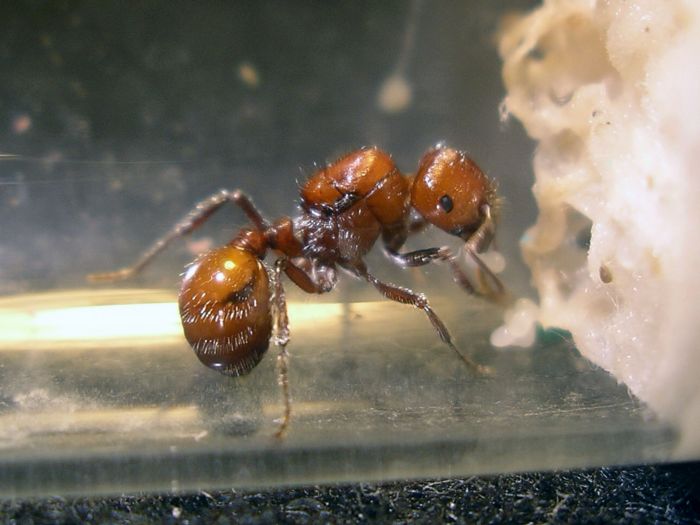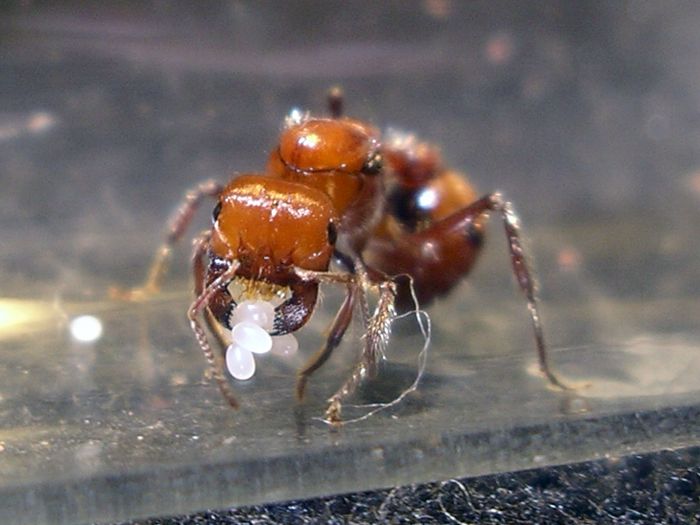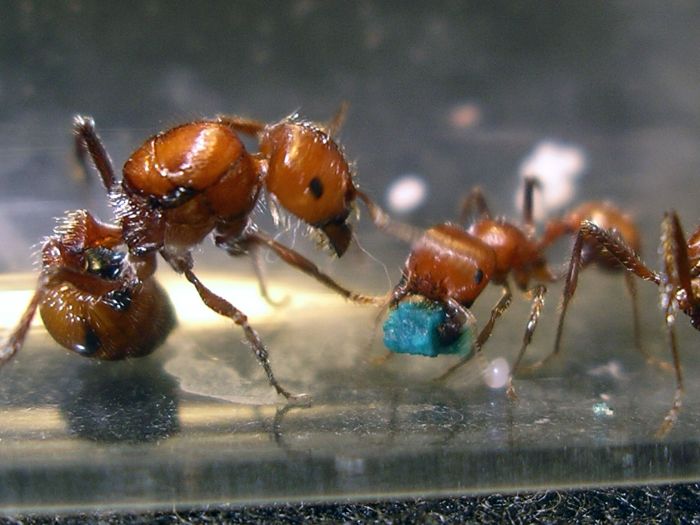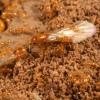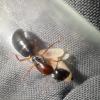I would not boost them with non species-specific relatives.
The queen already has some of the key elements she needs to be successful. She has food and the added assistance of her sisters. This species is very particular about temperature and humidity gradients as they occur on rocky/gravelly slopes in the Sonoran desert. If the brood does not develop through to adult workers, I would suspect possible inadequete temps and humidity gradients rather than not enough help.
I once tried boosting a P. rugosus queen with P. californicus callows'. They could not raise larvae beyond the early stage and the queen finally abandoned the nest to get away from the congeneric workers after a month. I put her alone back in the same enclosure (with seeds) and she successfully raised workers on her own. The various stages of the brood require certain temperature and humidity values and care and the needs of one species may not exactly overlap another in the same genus. Unless you just want to experiment, I think keeping like with like is probably the best approach.
Edited by Retroman, September 28 2014 - 10:25 AM.
